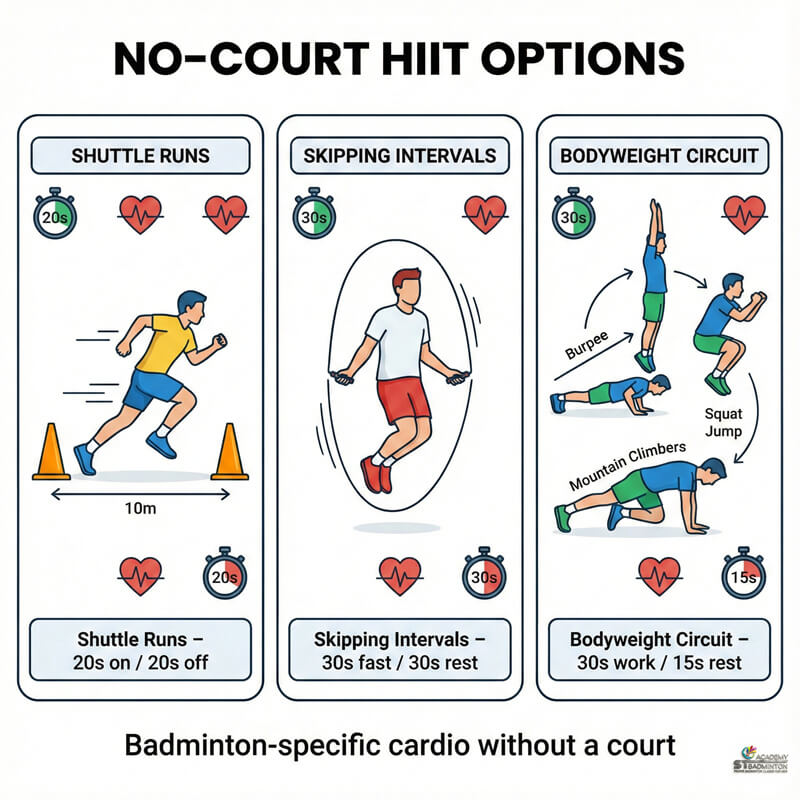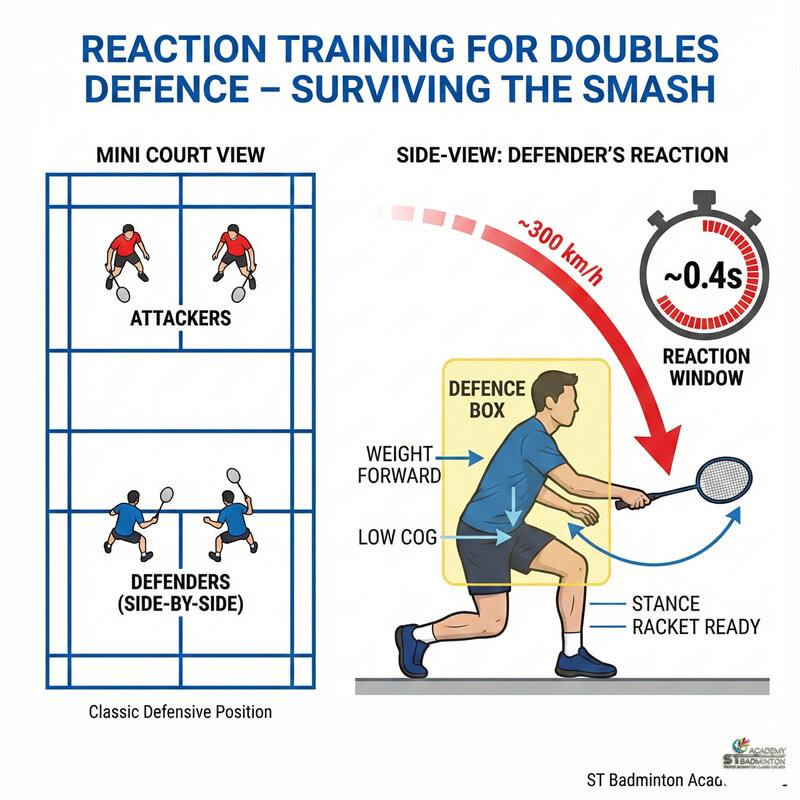Welcome to ST Badminton Academy’s badminton training in Malaysia! I’m a badminton training specialist and today I’d like to talk about the importance of developing your own personal badminton training philosophy.
It’s essential that we all have an individual approach to our game in order to get the best out of ourselves; having a clear plan for what you want to achieve will help keep you on track. In this article, I’ll be giving advice on how to develop your own unique style of training so you can take your game to the next level.
Setting Smart Goals
Many beginner badminton players think that physical strength and fitness are the only keys to success on the court. While it is true that having good endurance, agility, and power can help you in a match, there’s much more to succeeding in badminton than just being physically fit.
It’s important to develop your own personal training philosophy for honing skills like dynamic drills and mental focus.
Dynamic drills provide an opportunity to practice various shots while refining technique without having a partner or opponent present. This allows badminton players of any skill level to work on their shot accuracy, footwork, movement patterns, and timing–all of which are essential components of successful badminton playing.
Additionally, developing strong mental focus helps with managing pre-match jitters as well as keeping focused during long rallies so that mistakes aren’t made due to fatigue or distractions.
The best way to become adept at these two things is through consistent practice combined with dedication and patience. Commitment is key if you want to reach a higher level of play since this requires regularly attending practice sessions along with engaging in solo drills outside of those times.
Taking time out from each day for reflection after matches also serves to improve future performance by grasping what went wrong in past games and understanding how to adjust accordingly moving forward. With these strategies in place, you will be able set yourself up for success when striving towards meeting your goals both on and off the court!
Refining Your Technique
Having set SMART goals and identified what techniques need to be developed, it’s time to refine your technique. Mastering drills are important as they build muscle memory and help you improve quickly. It’s also essential to practice with a partner or coach who can give feedback on your performance and identify areas of improvement.
To ensure that these practices are effective, focus on specific skills and make sure you’re doing the exercises correctly.
It’s easy for badminton players to become overwhelmed by all their potential training activities; prioritizing your sessions is key in order to get the best results from your efforts. Start by breaking down each skill into smaller parts so that you can work on them separately; this will allow you to track progress more easily and understand which methods work best for you.
Devote enough time to each drill so that it becomes second nature – don’t rush through any exercise without having mastered its fundamentals first.
Finally, take regular breaks between drills or sets of drills during practice sessions. This gives both body and mind a chance to rest before tackling the next task at hand. Adapting an overall approach like this will help keep you motivated while ensuring that every aspect of your game is constantly improving over time.
Prioritizing Training Sessions
When it comes to developing my own badminton training philosophy, the first thing I like to think about is focusing on my weaknesses. It’s important to identify what I need to improve on, and then create a plan to tackle those weaknesses.
Structuring my training sessions is key – I make sure to have a balance of drills and games, and that I’m regularly challenging myself. I also make sure to leave time for rest and recovery, so I’m more than ready for the next session.
Focusing On Weaknesses
When it comes to prioritizing my training sessions, I always start by focusing on weaknesses first. This means assessing my ability and addressing any doubts or questions that come up during the process of improvement.
By taking a deeper look at what needs work and where potential issues may arise, I am better able to create an effective plan for how best to tackle those areas. It’s important, to be honest with yourself when looking into your weaknesses – no one knows you better than you do! With this knowledge in hand, I’m then able to make sure I spend time developing those skills so that I can reach my ultimate goal: becoming the best badminton player possible.
Structuring Training Sessions
Once I’ve assessed my weaknesses, the next step in prioritizing training sessions is to structure them. This means incorporating drills that target those areas and exploring various types of equipment or aids that can help me develop better badminton skills. To make sure I’m making progress toward my goals, I need to break down my training into smaller pieces so that it’s easier to track and measure results.
That way, I can adjust any part of my program if needed and get back on track quickly. With a structured plan in place, I can focus on what needs improvement while also taking advantage of other opportunities for growth. By doing this, I am able to stay committed and motivated during my journey to becoming the best badminton player possible! Other than choosing a good racket and also remember to choose the best racket restring in Malaysia.
Taking Time To Recover And Refuel
As a badminton training specialist, I prioritize giving my body the rest and recovery it needs. Taking time off can be just as important as putting in the hours on court and I think this is an integral part of any successful athlete’s philosophy. It’s essential to listen to your body and give it what it needs – whether that’s extra stretching or a day away from practice – so you can stay healthy and strong for long-term success.
The goal should always be to ensure proper form while playing, rather than simply going through the motions without focus. Playing with the correct technique not only improves performance but also helps reduce the risk of injury during intense sessions. To help stay focused on the form when practicing, I suggest:
| Ways to Incorporate Visualization into Badminton Training |
|---|
| 1. Visualize Perfect Form |
| Envision the execution of your best shots with perfect form during your badminton training. Visualization can help reinforce muscle memory and enhance your ability to replicate ideal techniques on the court. |
| 2. Picture Winning Shots in Key Moments |
| Imagine yourself making crucial, winning shots at key moments throughout each game. Visualization can instill a sense of confidence and mental readiness, preparing you to perform optimally during important points in a match. |
| 3. Consider the Steps for Success |
| Reflect on all the necessary steps for achieving success in badminton. This includes committing to intense practices and building trust within your team. Visualization can assist in mentally preparing for the dedication and teamwork required to excel in the sport. |
This kind of mindful approach will create better muscle memory in the long run and make sure you are making smart decisions about how hard you push yourself during practice sessions.
With these tips in mind, you’ll be able to build more consistency in your game and progress further faster by taking breaks whenever needed instead of trying too hard all at once. Taking steps towards building a support network is the next step for anyone wanting to improve their badminton skills!
Building A Support Network
In badminton, it is not only important to take time for recovery and refueling, but also essential to build a support network. It has been estimated that up to 79% of players who have achieved success in the sport had strong emotional support from their family and friends. Having access to reliable advice about your training program can be just as crucial.
As a badminton training specialist, I strongly believe in seeking guidance from others. When you are dealing with setbacks or feeling unmotivated during practice, having someone to turn to can make all the difference.
Whether it’s a coach, an experienced player, or even an online forum – talking through your thoughts and ideas can help you gain clarity on which direction to take with your development plan.
It is also beneficial to find people who understand what you are going through and will provide honest feedback without judgment. A good support system should allow you to feel encouraged while still pushing yourself out of your comfort zone so that progress can be made.
With this kind of environment, tracking how far you have come mentally and physically becomes easier and more rewarding over time.
Tracking Your Progress
As a badminton training specialist, it’s important for me to ensure that I am tracking my progress with data and metrics. This helps me understand what strategies are working and which ones need improvement. Daily tracking of this information allows me to analyze how each practice session is progressing in order to continually improve my game.
To keep track of all the necessary elements, I create spreadsheets on a weekly basis listing out essential statistics such as rallies won, movement speed, jump height, accuracy rate, etc.
With this data in hand, I can easily compare my performance from one week against another to see if any changes have been made or if there is something new worth trying out. In addition, these sheets help identify trends over time so that I can adjust my goals accordingly and continue pushing myself toward excellence.
The goal here is to always be striving for better scores and stats, while also keeping an open mind about experimenting with different strategies when needed. Learning from prior experiences will give me the insight I need to make continual improvements in my gameplay – ultimately making me a stronger opponent on the court!
Experimenting With Different Strategies
Have you ever stopped to ask yourself why badminton success requires such strategic planning? Achieving excellence in this sport involves more than just skill development. Instead, it takes a combination of dedication and well-thought-out strategies to reach the peak performance level.
As an aspiring badminton training specialist, I believe it is essential to experiment with different approaches while staying focused on long-term goals.
One effective way to do this is by setting smaller milestones that can be achieved incrementally within specific time frames. This encourages regular practice and helps break down complex tasks into manageable components.
For instance, if a player has difficulty executing precise drop shots they can begin by working on basic footwork drills until they gain confidence in their ability to move quickly around the court. After mastering these fundamental movements, they will have developed the foundation needed for honing more advanced skills like perfecting technique or anticipating the opponent’s moves.
Motivation must also remain high throughout the process in order for any strategy to prove successful. Developing a positive outlook is key as it allows players to keep sight of what matters most: having fun and enjoying every step along the journey towards becoming a better athlete both mentally and physically!
Staying Motivated
Having explored different strategies for honing badminton skills, the next step is to stay motivated. The sheer amount of practice needed to become a champion can be daunting; finding ways to remain inspired and enthusiastic about continuing on this journey is essential.
Seeking inspiration from others who have achieved your goals can help you keep going. Comparing notes with experienced players or coaches will also provide valuable insight into how they maintain their enthusiasm for the game.
Watching professional matches, attending events in person, and reading success stories- are all great sources of motivation that can help you stay focused on what lies ahead.
Dedication and discipline are clearly required if one wants to succeed at badminton, but without passion and drive it’s easy to get disheartened. On the path towards mastery, remember to take time out for yourself- celebrate small wins as well as big ones along the way! With dedication and camaraderie, there’s no limit to what you can achieve!
Frequently Asked Questions

What Is The Most Effective Way To Warm Up Before A Badminton Training Session?
When it comes to badminton training, a solid warm-up routine is essential. A comprehensive approach should include both mental and physical preparation; sport psychology techniques like visualization can help get you in the right mindset while dynamic stretching, light cardio, and nutrition planning all contribute to your performance.
Taking the time for a proper warm-up will help ensure that you not only perform at your best but also stay injury free throughout your session.
How Should I Incorporate Strength And Conditioning Into My Badminton Training?
When it comes to incorporating strength and conditioning into your badminton training, there are two key elements you should focus on for success: mental preparation and strategic planning.
Mental preparation involves understanding the appropriate exercises that will help improve your performance in a game, such as agility drills or plyometrics.
Strategic planning is also important; this means being aware of how each drill impacts your body so that you can adjust accordingly and make sure you don’t overdo it. Both these components work together to ensure that you have an effective strength and conditioning program which will give you the edge when competing.
How Often Should I Compete In Tournaments To Track My Progress?
Competing in tournaments is a critical part of tracking progress, as it provides a platform to evaluate your strategy planning and nutrition planning. As a badminton training specialist, I recommend competing at least once every two months or so.
This gives you the perfect amount of time to fine-tune your game plan, without risking burnout from too frequent tournament play.
Competing regularly also allows you to gain valuable experience that can be used to further develop your own badminton training philosophy.
What Are The Best Drills To Improve My Badminton Technique?
When it comes to improving your badminton technique, there are a variety of drills you can do. From incorporating drill variations like alternating between forehand and backhand shots to focusing on footwork or shuttle control, these drills will help you hone your skillset for the court.
Additionally, don’t forget about the mental aspect – ensure that you’re mentally prepared by visualizing what moves you want to execute during each point. Together, these elements come together to create an effective training routine that’ll help improve your badminton technique!
How Can I Stay Motivated On Days When I Don’t Feel Like Training?
When it comes to staying motivated on days when you don’t feel like training, the key is self-reflection and goal setting. When we hit a low point in our badminton journey, it’s important to take time for ourselves and think about what we’ve accomplished so far.
Remind yourself of why you started playing badminton in the first place and how much progress you have made thus far. Then set some simple goals that can help motivate you to train even harder – this could be something like completing five drills or mastering a certain technique. By taking the time for self-reflection and setting achievable goals, those off days won’t seem so daunting.
Develop Your Own Badminton Training Philosophy
Badminton is a sport that requires dedication and passion. As you develop your own badminton training philosophy, keep in mind that the journey to success takes time and effort. You must be willing to push yourself mentally and physically every day if you want to reach peak performance levels.
Think of it like planting a seed: the more care and attention you give it, the greater rewards you will reap down the line. With patience, hard work, and perseverance, you can build an effective badminton training program for yourself and become an elite player.





